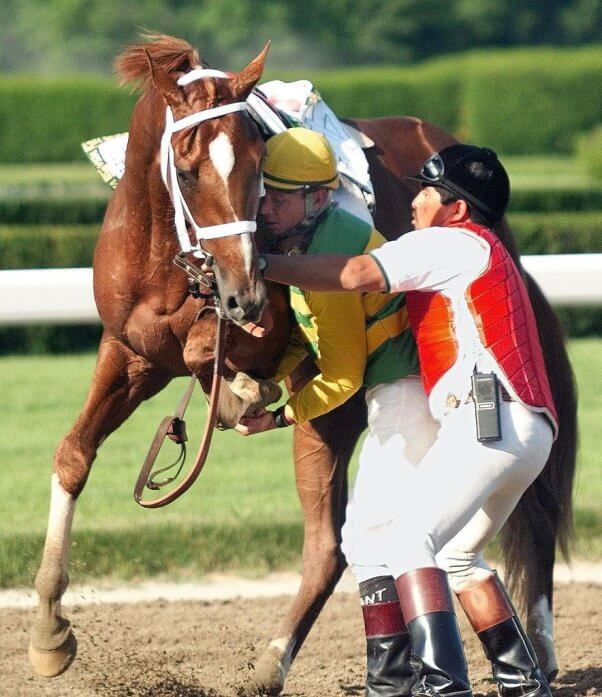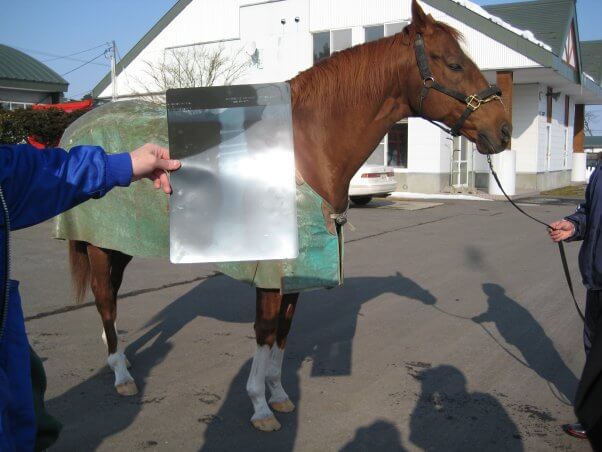25 Years Ago: Charismatic’s Shocking Injury in the Belmont Stakes
After winning the 1999 Kentucky Derby and the Preakness Stakes, Charismatic was favored to win the coveted Triple Crown—but he broke his leg in the home stretch of the Belmont Stakes. This injury was memorialized in the iconic photo of jockey Chris Antley cradling the horse’s broken leg in a protective hold.


But 25 years later, Charismatic’s trainer, D. Wayne Lukas, is still playing Russian roulette with horses’ lives.
Charismatic was just one in a long line of Lukas trainees to exit the Belmont Stakes and other major stakes races in an equine ambulance.
Lukas’ modus operandi has always been to train horses hard and race them often. He has dismissed concerns about the soundness of some of his horses and the volume of their work. This backfired catastrophically when Union City sustained a fatal fracture in the 1993 Preakness, after many believed the horse had already been hurt the prior week and was probably still sore.
Charismatic was subjected to a grueling race schedule leading up to his breakdown in the Belmont Stakes, including one stretch in which Lukas entered him in three races in just 20 days—and this was before the demanding Triple Crown series.
In 2022, Lukas raced Ethereal Road in back-to-back weeks during April in a desperate attempt to secure enough Kentucky Derby qualifying points. And in this year’s Preakness Stakes, Lukas questionably entered Just Steel on just two weeks’ rest after finishing a fading 17th off a fast pace near the front of the pack in the Kentucky Derby. Just Steel got hurt in the Preakness and had to have surgery for a condylar fracture. This injury was overshadowed by the win of Lukas’ other horse in the Preakness, Seize The Grey, who’s poised to contend on June 8 in the Belmont Stakes, which is being run at Saratoga this year. Based on Lukas’ history, we have urged track veterinarians at Saratoga to flag Seize The Grey and thoroughly examine him, including with a comprehensive CT scan—which would have detected preexisting microfractures in Charismatic, if the technology had been widely available at the time.
During a PETA undercover investigation in Saratoga, we recorded Lukas laughing about how years ago, everyone had painful electric shocking devices (“buzzers”) at the Ruidoso Downs racetrack to overdrive the horses. He joked that it sounded like a “full-blown orchestra.”
Lukas must not have seen the industry’s own surveys, which concluded overwhelmingly that the public—including even bettors—care about the welfare and safety of horses more than any other issue in racing. Abuse is no laughing matter.
Horse racing faces an existential crisis in negative public perception, heightened by the horrifying fatalities of New York Thunder and Maple Leaf Mel near the finish line at Saratoga last summer. When New York Thunder’s leg snapped in front of the Saratoga grandstand, some people in the crowd—especially those with children—were so traumatized that they got up and walked out, vowing that they were done with racing and would never return.
Despite this public relations disaster last year, the fatality rate has gone up 46% in New York State through the first five months of 2024. The racing industry’s answer has been conducting campaigns to try to highlight positive stories about racing. But horse racing doesn’t just have an image problem—it has a reality problem that marketing campaigns can’t fix. All available measures to protect racehorses must be taken, including these 12 recommendations from PETA.
Please don’t attend, bet on, or watch the Belmont Stakes this year while horses are still dying on racetracks.

